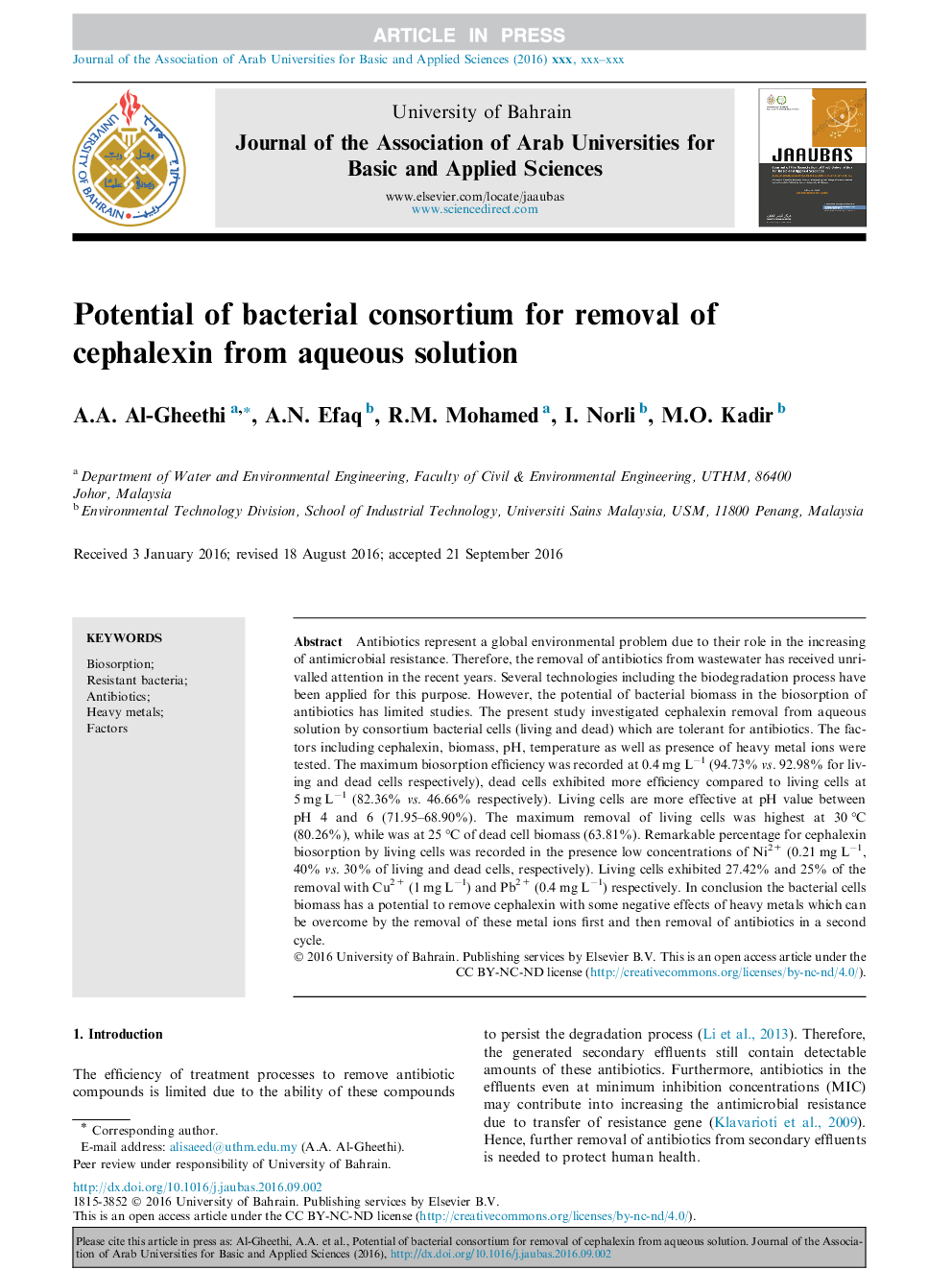| Article ID | Journal | Published Year | Pages | File Type |
|---|---|---|---|---|
| 7695703 | Journal of the Association of Arab Universities for Basic and Applied Sciences | 2017 | 8 Pages |
Abstract
Antibiotics represent a global environmental problem due to their role in the increasing of antimicrobial resistance. Therefore, the removal of antibiotics from wastewater has received unrivalled attention in the recent years. Several technologies including the biodegradation process have been applied for this purpose. However, the potential of bacterial biomass in the biosorption of antibiotics has limited studies. The present study investigated cephalexin removal from aqueous solution by consortium bacterial cells (living and dead) which are tolerant for antibiotics. The factors including cephalexin, biomass, pH, temperature as well as presence of heavy metal ions were tested. The maximum biosorption efficiency was recorded at 0.4 mg Lâ1 (94.73% vs. 92.98% for living and dead cells respectively), dead cells exhibited more efficiency compared to living cells at 5 mg Lâ1 (82.36% vs. 46.66% respectively). Living cells are more effective at pH value between pH 4 and 6 (71.95-68.90%). The maximum removal of living cells was highest at 30 °C (80.26%), while was at 25 °C of dead cell biomass (63.81%). Remarkable percentage for cephalexin biosorption by living cells was recorded in the presence low concentrations of Ni2+ (0.21 mg Lâ1, 40% vs. 30% of living and dead cells, respectively). Living cells exhibited 27.42% and 25% of the removal with Cu2+ (1 mg Lâ1) and Pb2+ (0.4 mg Lâ1) respectively. In conclusion the bacterial cells biomass has a potential to remove cephalexin with some negative effects of heavy metals which can be overcome by the removal of these metal ions first and then removal of antibiotics in a second cycle.
Related Topics
Physical Sciences and Engineering
Chemistry
Chemistry (General)
Authors
A.A. Al-Gheethi, A.N. Efaq, R.M. Mohamed, I. Norli, M.O. Kadir,
